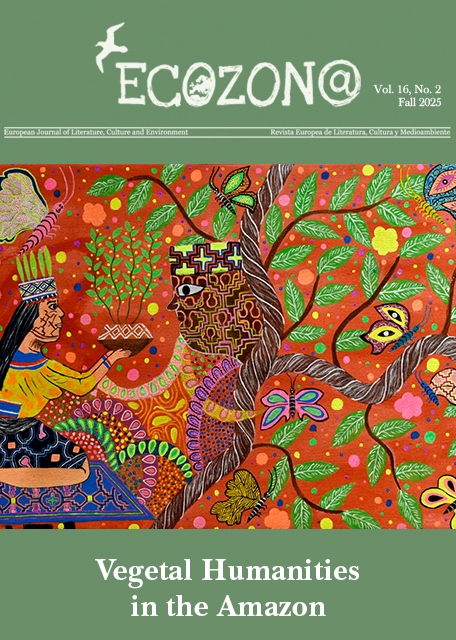The Forest for the Trees: The umwelt, the holobiont, and metaphor in Richard Powers’ "The Overstory" and Shakespeare’s "Macbeth"
DOI :
https://doi.org/10.37536/ECOZONA.2022.13.2.4398Mots-clés :
biosemiotics, mind, metaphor, Shakespeare, mycorrhizae, emergence, ecocriticism, narrative scholarship, holobiontRésumé
This work of ecocritical narrative scholarship weaves analysis of Richard Powers’ The Overstory—specifically its invocation of Shakespeare’s Macbeth—with a discussion of biosemiotics, metaphor, emergence, and the narrative of my own family’s pandemic-inspired move to a national park in the mountains outside of Madrid. The essay investigates the juncture between the human holobiont—the space in and around the human body that constitutes shared habitats for symbionts—, the holobiont of pine trees, and the human umwelt. In other words, this piece focuses on the spaces in which bacteria, fungi, and the biological origins of semiosis and language converge. I seek to present a clearer perception of the natural world rooted in narratives of emergence that foreground connections—literary, natural, metaphorical, and material. The form of this paper—the latticework that emerges from the interweaving of literary analysis, biosemiotic and ecocritical theory, and personal narrative—is also part of its content. Through its focus on the intersection of narrative, biosemiotics and material ecocriticism, this work calls into question the very nature of literary metaphor and investigates how the material of literature literally ties us to our environment. Through an exploration of the phenomenological parallel between textual motion in literature, viral motion in nature, and the movement of people through natural and social environments, this document challenges the very idea of metaphor, proposing in its stead an insistence that story, consciousness, and organisms converge in the same material space creating patterns of resemblance that speak to the kinship of all biological systems.
Téléchargements
Téléchargements
Publié-e
Numéro
Rubrique
Licence
Authors who publish with this journal agree to the following terms:
a) Authors retain copyright and grant the journal right of first publication with the work simultaneously licensed under a Creative Commons Attribution License that allows others to share the work with an acknowledgement of the work's authorship and initial publication in this journal (CC BY-NC for articles and CC BY-NC-ND for creative work, unless author requests otherwise.
b) Authors are able to enter into separate, additional contractual arrangements for the non-exclusive distribution of the journal's published version of the work (e.g., post it to an institutional repository or publish it in a book), with an acknowledgement of its initial publication in this journal.
c) Authors are permitted and encouraged to post their work online (e.g., in institutional repositories or on their website) prior to and during the submission process, as it can lead to productive exchanges, as well as earlier and greater citation of published work (See The Effect of Open Access).










